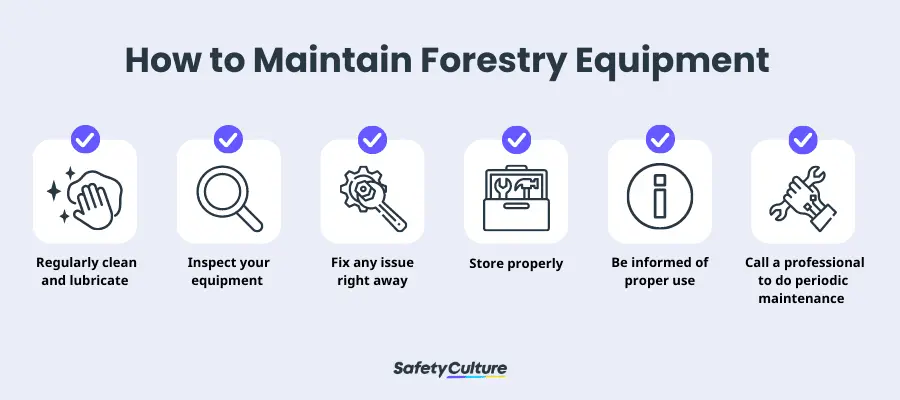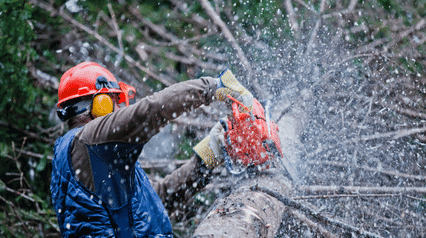What is Forestry Equipment?
Forestry equipment is a general term for the tools used in forestry, the management, and the conversion of forests to other uses. They are used for both logging and land clearing in an agricultural setting. There are many different types of forestry equipment, each of them designed for a specific task. From chainsaws and felling wedges to tree shears and skidders, there is a wide range of equipment available to help with all aspects of forestry work.
In recent years, there has been an increasing focus on the environmental impact of forestry equipment. As a result, many manufacturers have developed new products designed to be more efficient and have a lower impact on the environment.
What Are the Different Types of Forestry Equipment?
There is a wide range of forestry equipment available on the market, from heavy to light machinery. The type of equipment you need will depend on the specific forestry applications you’ll be using it for.
Heavy Forestry Equipment
Let’s first discuss heavy forestry equipment. Below are the 5 common types of these include:
- Feller Bunchers: A feller buncher is a piece of heavy machinery used for cutting down trees to easily harvest. It consists of a cutting head with a set of sharp blades that cut through the tree trunk.
- Skidders: A skidder is a vehicle used for dragging logs or other heavy materials through the forest. Skidders typically have large wheels or tracks to allow them to move over rough terrain.
- Stump Grinders: A stump grinder is a machine used for grinding down tree stumps to below ground level. This is typically done after the tree has been felled and is often used in preparation for replanting.
- Excavators: An excavator is a large piece of construction machinery used for digging holes, trenches, or other forms of earthmoving. Excavators can be fitted with a range of attachments, making them versatile machines for forestry work.
- Forwarders: A forwarder is a vehicle used for transporting logs or other heavy materials from the forest to a sawmill or other destination. Forwarders typically have large wheels or tracks to allow them to move over rough terrain.
Light Forestry Equipment
Now, let’s move on to discussing light forestry equipment. Here are 5 common types used in forestry applications, and these are:
- Chainsaws: Chainsaws are hand-held tools that are often used for felling trees and cutting them into small logs easily. They are very common to loggers due to the ease when cutting down huge chunks of wood.
- Axes and Hatchets: Similar to chainsaws, axes and hatchets are also hand-held tools. They are often used for chopping down trees or splitting wood. However, they require more strength and effort to use than chainsaws.
- Portable Sawmills: Portable sawmills are used to cut logs into lumber. They are often used by loggers to create their own lumber for construction projects.
- Brush Cutters: Brush cutters are used to clear away brush and small trees. They are often used in conjunction with other forestry equipment to clear a path for the larger machinery.
- Log Splitters: Log splitters are used to split logs into smaller pieces. They are often used by loggers to create firewood or to split logs for construction projects.
Safety Requirements
Depending on the type of equipment you are using, there may be specific safety requirements that you need to follow. For example, according to ISO 65.060.80, chainsaws must have a certain type of blade guard to protect the operator from the chain. Other types of forestry equipment may have different safety requirements.
It is important to familiarize yourself with the safety requirements for the type of equipment you will be using. You can find this information in the operator’s manual for the equipment. Also, make sure to have proper training and knowledge before using it.
How To Use Them
If you’re looking to clear land for farming, construction, or any other purpose, you’ll need to know how to use forestry equipment. This type of equipment is often designed for heavy-duty work and can be dangerous if used improperly.
To use forestry equipment safely and effectively, you need to be properly trained, as each has different functions and power. Many equipment dealers offer training programs for workers to allow the safe handling of these types of equipment.
For example, if you’ve never used a chainsaw before, it’s important to first understand the basics of how it works and how to properly hold and operate the saw. Always wear protective gear, such as gloves, chaps, and a helmet with a face shield, when using a chainsaw.
Online resources are also available that can help workers learn how to use the equipment. With the right training, workers can safely and efficiently clear any land using forestry equipment.
Digitize the way you Work
Empower your team with SafetyCulture to perform checks, train staff, report issues, and automate tasks with our digital platform.
Get Started for FreeHow to Maintain These Equipment
Maintenance of forestry equipment is crucial for any sawmill or logging operation. Not only does it keep your workers safe, but it also ensures that your machinery is running at peak efficiency.
Here are a few tips on how to keep your forestry equipment in good condition so that it stays in good condition for years to come.

How to Maintain Forestry Equipment | SafetyCulture
- Make sure to regularly clean and lubricate your equipment. This will help to prevent rust and other damage that can occur over time.
- Be sure to inspect your equipment regularly for any signs of wear and tear. For chainsaws, you can use a chainsaw maintenance checklist, to ensure proper inspection of the equipment.
- If you notice any problems, be sure to fix them right away so that they don’t become bigger issues down the road.
- If you are not using your equipment regularly, be sure to store it properly to prevent any damage from occurring. This includes keeping it clean and lubricated regularly.
- Be informed of how to properly use the equipment to prevent any damage from improper use.
- For heavy equipments such as feller bunchers, make sure to call a professional to do periodic maintenance and check for any issues on your equipment.
By following these tips, you can help ensure that your forestry equipment lasts for years to come.
FAQs for Forestry Equipment
Farmers, lumberjacks, and other people who work with wood and trees are the ones who often use forestry equipment. They are trained and knowledgeable in handling these kinds of equipment.
According to the Occupational Safety and Health Administration (OSHA), employers must be the ones to provide proper safety equipment to their workers and also ensure a safe working environment for them.
Two of the most commonly used forestry equipment are feller bunchers and harvesters. This is because they can easily help harvest and clear logs for workers.
The cost of forestry equipment can vary depending on its type and usage. The most expensive ones can often cost about US$ 8,500 to $12,999, while cheaper ones can cost around $90 to $600.



